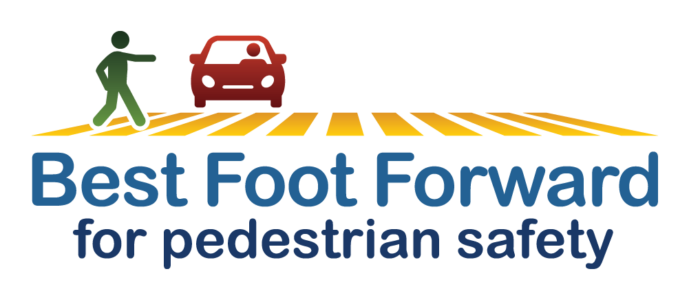Hosted by Bike/Walk Central Florida, the Best Foot Forward (BFF) Summit of 2024 continued its…

Road Diets: The Paradox of Traffic Flow
Can narrowing major roads actually make traffic flow better while making the area safer for pedestrians?
The short answer: yes. Cutting out lanes from large, traffic heavy roads makes drivers spread out and slow down.
Many drivers feel this is counter-intuitive. They think, ‘more lanes means cars can go faster,’ therefore fewer lanes must mean more traffic congestion. Not quite.

Think of it this way – drivers can either be piled onto one large, central road, or distributed among several smaller, equally sized roads. Though you might be inclined to take the large road home from work because of the high speed-limit, distributing rush hour traffic over several lower-speed streets will spare you time sitting in traffic, dealing with angry drivers and actually get you home in time for dinner.
How does it work? And how does it make streets safer for pedestrians too?
Daniel Herriges explains it this way in a Strong Towns article, “In fact, the answer reveals a fundamental paradox of traffic flow: removing the highest-capacity leg in a network may actually make the network as a whole function better, with less congestion and smoother travel.”
One researcher used a sports analogy called “The Ewing Theory.” (Yes, we mean Patrick Ewing the NY Knicks basketball player.) The Knicks seemed, strangely, to play better without Ewing—even though he was the best player on the team. When he was out, all the other players had to cooperate more, share the ball and play better as a team—rather than just relying on Ewing to carry them. It’s the same principal when you have one multi-lane, high-speed road in a network of smaller side streets. If you take out the big dog, cars will gravitate to all the other side roads, thus spreading out traffic and easing congestion.
Meet the road diet: the process of removing lanes on a high-speed road. Often planners use the extra space they gained from reducing lanes to add protected bike lanes, wider (read: safer) sidewalks or protected medians. No matter the change, road diets slow down dangerous, high-speed roads, spread out cars and therefore increase walkability.
Last year, we saw a road diet in action along Curry Ford Road. In May 2018, a section of the road was reduced to two travel lanes with separated bike lanes along both sides. The City of Orlando used the project as a test—for about a month. Then they returned the road to its original 4 lanes.

City officials wanted to see how the changes would affect drivers, pedestrians and bicyclists and get public feedback, before committing to the change. City officials reviewed the experiment in June 2018 and then created a report to summarize their findings. Unfortunately, the city decided not to go through with a permanent change, due to lots of resistence from the community about lowering the speed limit.
But, the city is planning to try it all again. The new proposed plans for Robinson Street include a road diet. Robinson is currently high-speed, traffic-heavy road that runs through downtown Orlando, across the north side of Lake Eola, through neighborhoods to the executive airport. The Florida Department of Transportation has been working on plans to make the road more accommodating for all forms of transportation for nearly three years. When the road diet is put into effect, it will shrink Robinson from four lanes to three and incorporate space for cycling and pedestrian travel.
Road diets can make streets safer, more resilient when it comes to traffic and increase cost efficiency. And, they can increase accessibility for bikers and walkers. Best Foot Forward supports the triple E approach to safety. And road diets fall clearly into the engineering category.
Though road diets require thorough city planning and longer construction times, the benefits for drivers and walkers could well exceed the costs for our cities in Central Florida. What other Orlando roads do you think could use a diet?




This Post Has 0 Comments